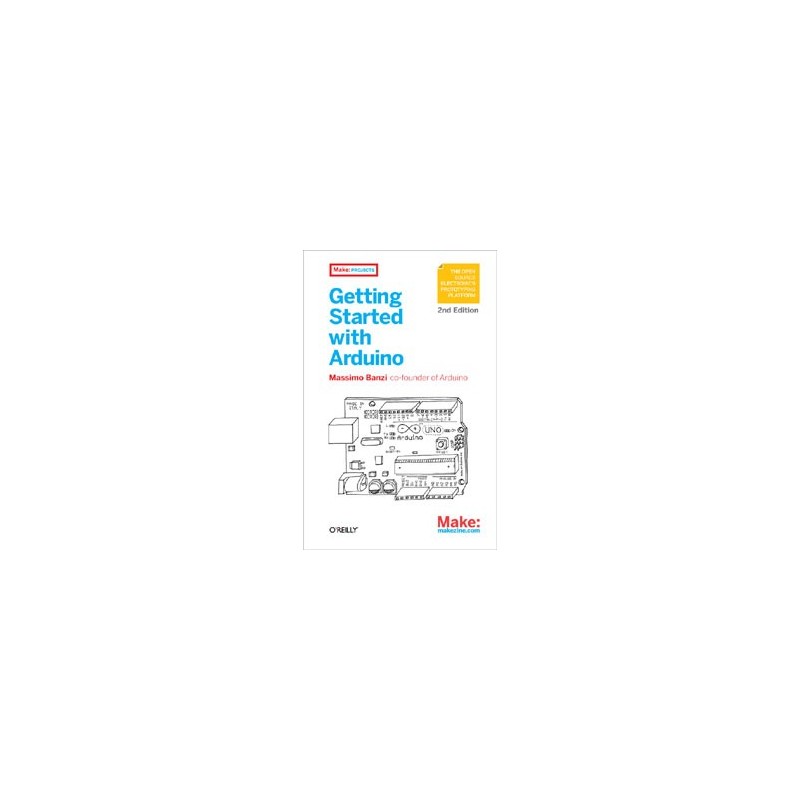- Obecnie brak na stanie



Massimo Banzi
Książka "Getting started with Arduino, 2nd Edition"
(książka w języku angielskim)
Autor: Massimo Banzi
October 2011
Stron: 128
ISBN: 978-1-449-30987-9
This edition thorough introduction, updated for Arduino 1.0, gives you lots of ideas for projects and helps you work with them right away. From getting organized to putting the final touches on your prototype, all the information you need is here!
Inside, you’ll learn about:
Getting started with Arduino is a snap. To use the introductory examples in this guide, all you need an Arduino Uno or earlier model, along with USB A-B cable and an LED. The easy-to-use Arduino development environment is free to download.Join hundreds of thousands of hobbyists who have discovered this incredible (and educational) platform. Written by the co-founder of the Arduino project, Getting Started with Arduino gets you in on all the fun!
Arduino Shield - MEGA Proto KIT Rev3
Brak towaru
Tom Igoe
Brak towaru
Moduł RTC do Banana Pi łączy się z komputerem za pomocą magistrali I2C. Umożliwia jednoczesne podłączenie kaskadowo do 8 modułów. W zestawie znajduje się bateria.
Brak towaru
8-KANAŁOWY SYSTEM POMIARU TEMPERATURY Z USB - ZESTAW DO SAMODZIELNEGO MONTAŻU
Brak towaru
Brak towaru
Zestaw startowy z dwoma modułami Xbee (series 1), shieldem Arduino Xbee Shield (dla Arduino) oraz adapterem Xbee Explorer USB.
Brak towaru
Brak towaru
Brak towaru
Brak towaru
Brak towaru
Brak towaru
Filament firmy ROSA3D wykonany z wysokiej jakości granulatu PLA. Na szpuli nawinięte jest 0,8 kg filamentu o średnicy 1,75 mm. ROSA3D PLA Starter Pink Satin
Brak towaru
Moduł z wyświetlaczem e-Paper o przekątnej 7,5" i rozdzielczości 640x384 px. Komunikacja przez interfejs SPI. Waveshare 7.5inch e-Paper HAT (C)
Brak towaru
Brak towaru
Wyświetlacz graficzny 128x64, 80x54mm, Backlight (yellow-green), Typ: COG, STN 3.3V ST7565R
Brak towaru
X-NUCLEO-IKS01A2 to shield z czujnikami MEMS: akcelerometrem, żyroskopem, magnetometrem, czujnikiem ciśnienia, wilgotności i temperatury. Shield przeznaczony jest do pracy z płytkami z rodziny STM32 Nucleo (złącze zgodne ze standardem Arduino UNO R3). Czujniki używają do komunikacji interfejsu I2C. Dodatkowe złącze pozwala dołączyć kolejne czujniki
Brak towaru
Brak towaru
Brak towaru

Massimo Banzi
